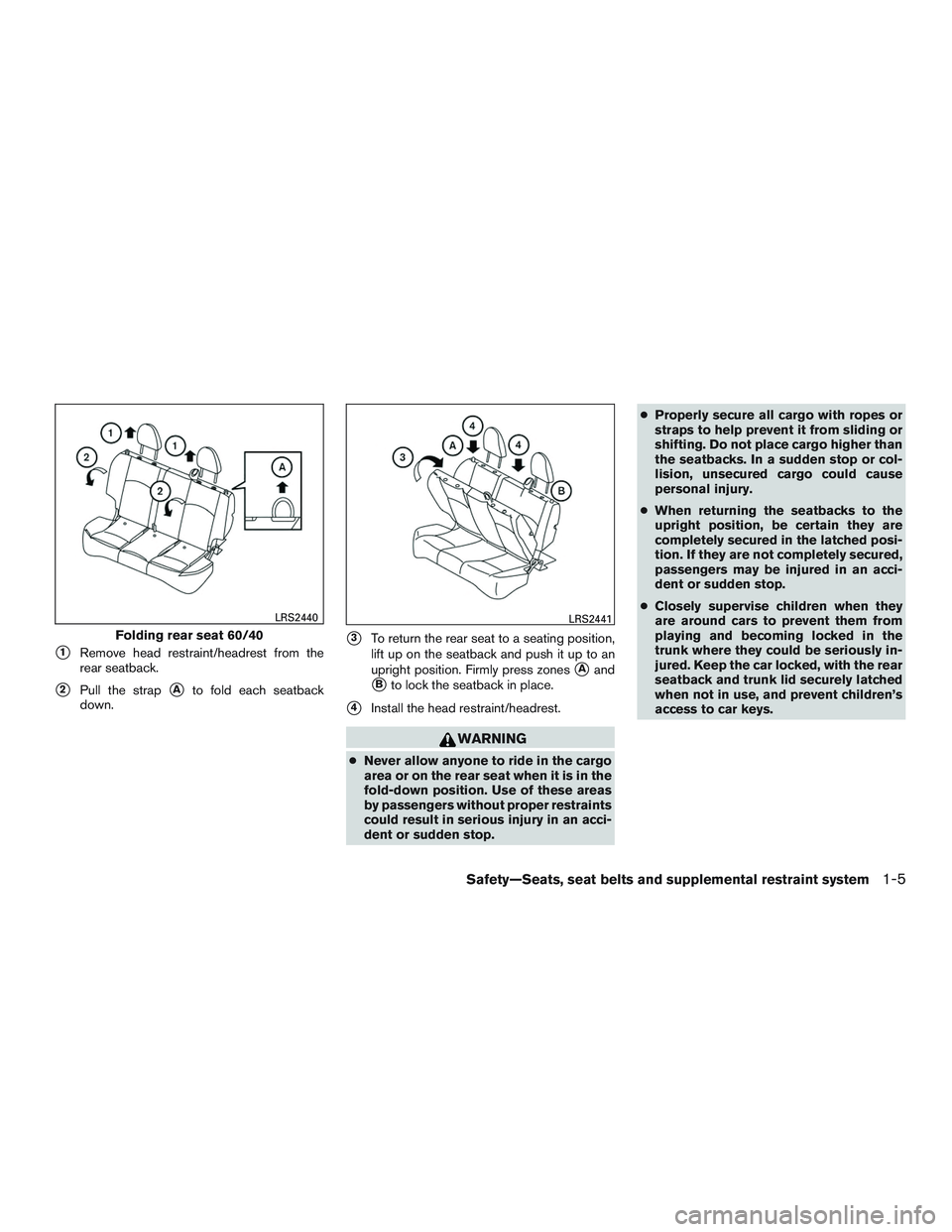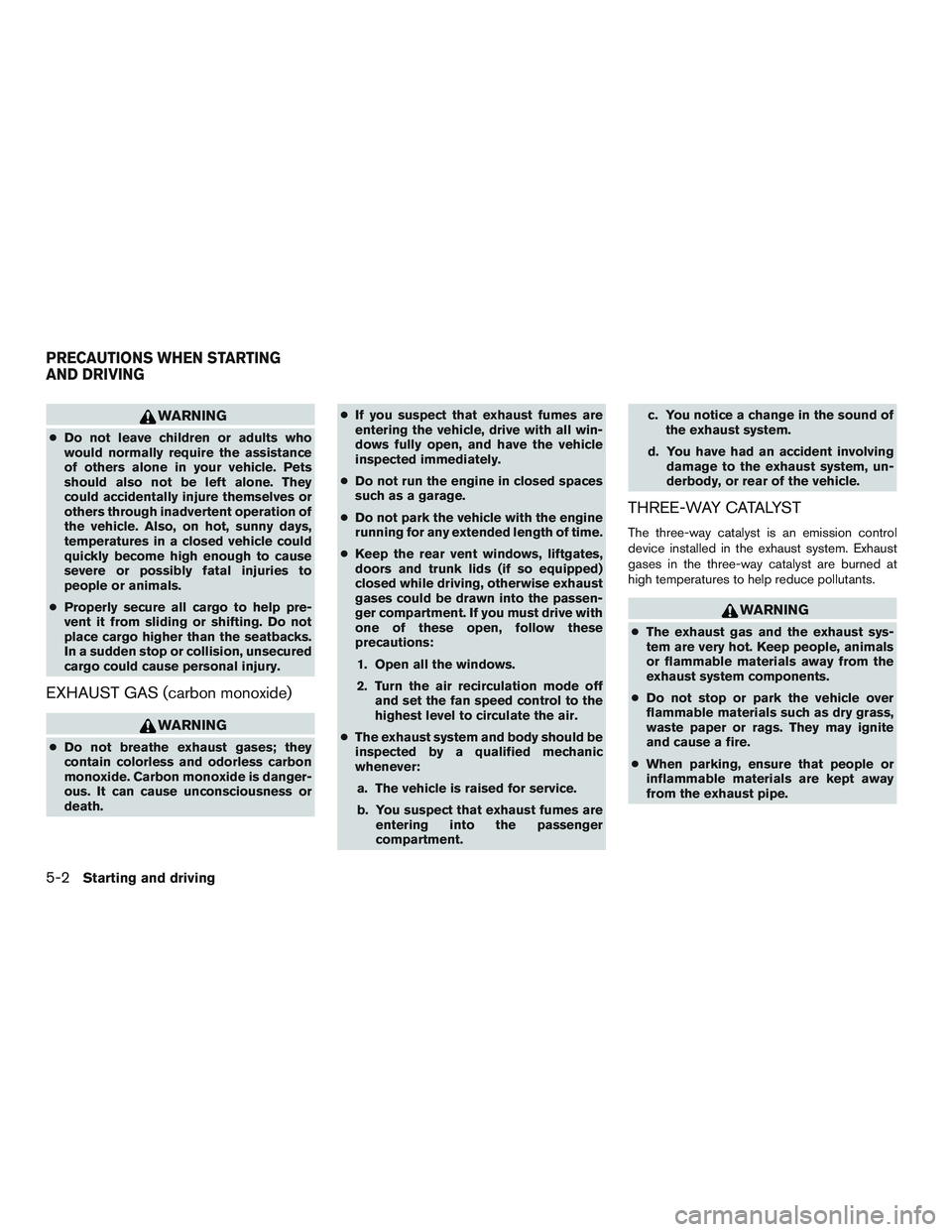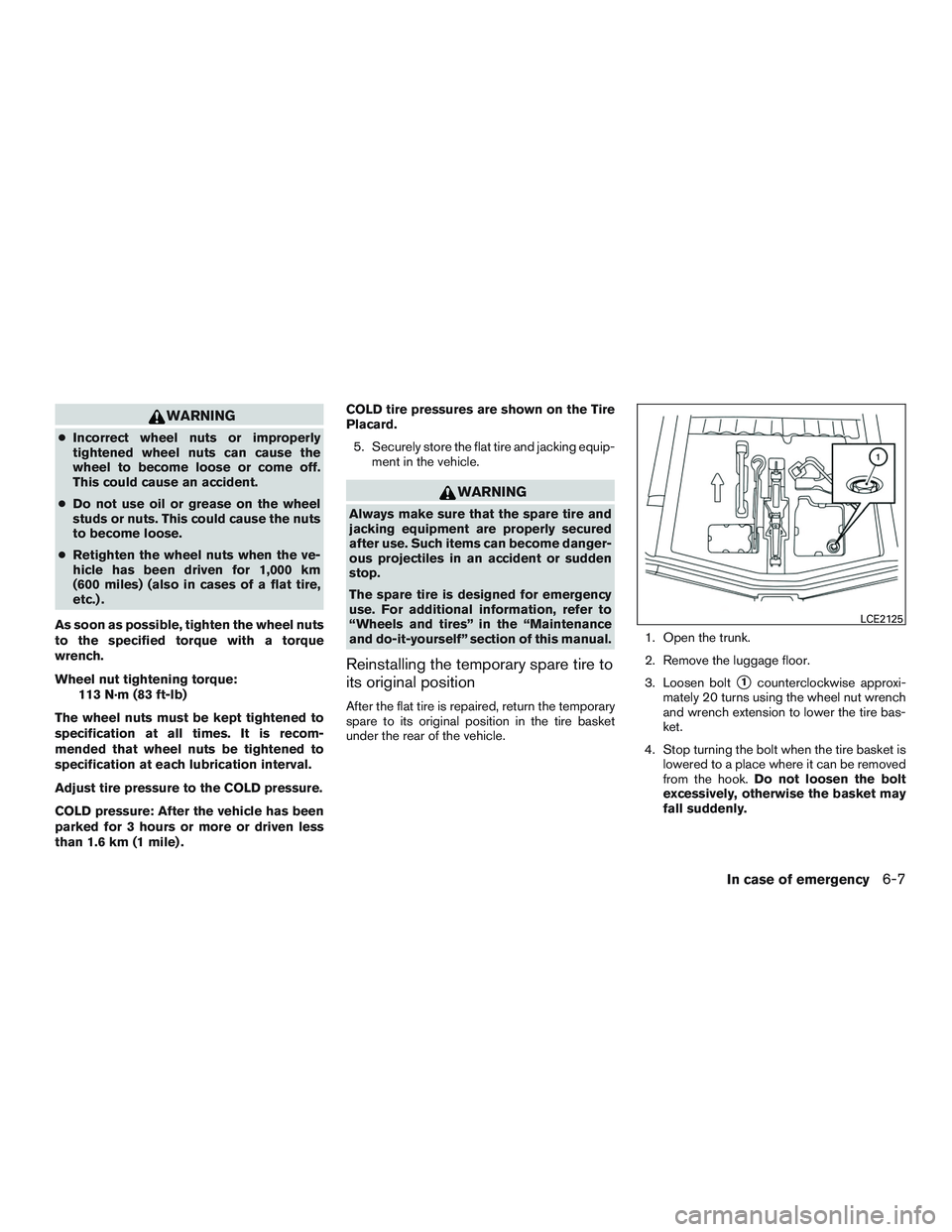Page 22 of 293

�1Remove head restraint/headrest from the
rear seatback.
�2Pull the strap�Ato fold each seatback
down.
�3To return the rear seat to a seating position,
lift up on the seatback and push it up to an
upright position. Firmly press zones
�Aand
�Bto lock the seatback in place.
�4Install the head restraint/headrest.
WARNING
● Never allow anyone to ride in the cargo
area or on the rear seat when it is in the
fold-down position. Use of these areas
by passengers without proper restraints
could result in serious injury in an acci-
dent or sudden stop. ●
Properly secure all cargo with ropes or
straps to help prevent it from sliding or
shifting. Do not place cargo higher than
the seatbacks. In a sudden stop or col-
lision, unsecured cargo could cause
personal injury.
● When returning the seatbacks to the
upright position, be certain they are
completely secured in the latched posi-
tion. If they are not completely secured,
passengers may be injured in an acci-
dent or sudden stop.
● Closely supervise children when they
are around cars to prevent them from
playing and becoming locked in the
trunk where they could be seriously in-
jured. Keep the car locked, with the rear
seatback and trunk lid securely latched
when not in use, and prevent children’s
access to car keys.
Folding rear seat 60/40
LRS2440LRS2441
Safety—Seats, seat belts and supplemental restraint system1-5
Page 175 of 293

WARNING
●Do not leave children or adults who
would normally require the assistance
of others alone in your vehicle. Pets
should also not be left alone. They
could accidentally injure themselves or
others through inadvertent operation of
the vehicle. Also, on hot, sunny days,
temperatures in a closed vehicle could
quickly become high enough to cause
severe or possibly fatal injuries to
people or animals.
● Properly secure all cargo to help pre-
vent it from sliding or shifting. Do not
place cargo higher than the seatbacks.
In a sudden stop or collision, unsecured
cargo could cause personal injury.
EXHAUST GAS (carbon monoxide)
WARNING
● Do not breathe exhaust gases; they
contain colorless and odorless carbon
monoxide. Carbon monoxide is danger-
ous. It can cause unconsciousness or
death. ●
If you suspect that exhaust fumes are
entering the vehicle, drive with all win-
dows fully open, and have the vehicle
inspected immediately.
● Do not run the engine in closed spaces
such as a garage.
● Do not park the vehicle with the engine
running for any extended length of time.
● Keep the rear vent windows, liftgates,
doors and trunk lids (if so equipped)
closed while driving, otherwise exhaust
gases could be drawn into the passen-
ger compartment. If you must drive with
one of these open, follow these
precautions:
1. Open all the windows.
2. Turn the air recirculation mode off and set the fan speed control to the
highest level to circulate the air.
● The exhaust system and body should be
inspected by a qualified mechanic
whenever:
a. The vehicle is raised for service.
b. You suspect that exhaust fumes are entering into the passenger
compartment. c. You notice a change in the sound of
the exhaust system.
d. You have had an accident involving damage to the exhaust system, un-
derbody, or rear of the vehicle.
THREE-WAY CATALYST
The three-way catalyst is an emission control
device installed in the exhaust system. Exhaust
gases in the three-way catalyst are burned at
high temperatures to help reduce pollutants.
WARNING
●The exhaust gas and the exhaust sys-
tem are very hot. Keep people, animals
or flammable materials away from the
exhaust system components.
● Do not stop or park the vehicle over
flammable materials such as dry grass,
waste paper or rags. They may ignite
and cause a fire.
● When parking, ensure that people or
inflammable materials are kept away
from the exhaust pipe.
PRECAUTIONS WHEN STARTING
AND DRIVING
5-2Starting and driving
Page 206 of 293

WARNING
●Incorrect wheel nuts or improperly
tightened wheel nuts can cause the
wheel to become loose or come off.
This could cause an accident.
● Do not use oil or grease on the wheel
studs or nuts. This could cause the nuts
to become loose.
● Retighten the wheel nuts when the ve-
hicle has been driven for 1,000 km
(600 miles) (also in cases of a flat tire,
etc.) .
As soon as possible, tighten the wheel nuts
to the specified torque with a torque
wrench.
Wheel nut tightening torque: 113 N·m (83 ft-lb)
The wheel nuts must be kept tightened to
specification at all times. It is recom-
mended that wheel nuts be tightened to
specification at each lubrication interval.
Adjust tire pressure to the COLD pressure.
COLD pressure: After the vehicle has been
parked for 3 hours or more or driven less
than 1.6 km (1 mile) . COLD tire pressures are shown on the Tire
Placard.
5. Securely store the flat tire and jacking equip- ment in the vehicle.
WARNING
Always make sure that the spare tire and
jacking equipment are properly secured
after use. Such items can become danger-
ous projectiles in an accident or sudden
stop.
The spare tire is designed for emergency
use. For additional information, refer to
“Wheels and tires” in the “Maintenance
and do-it-yourself” section of this manual.
Reinstalling the temporary spare tire to
its original position
After the flat tire is repaired, return the temporary
spare to its original position in the tire basket
under the rear of the vehicle. 1. Open the trunk.
2. Remove the luggage floor.
3. Loosen bolt
�1counterclockwise approxi-
mately 20 turns using the wheel nut wrench
and wrench extension to lower the tire bas-
ket.
4. Stop turning the bolt when the tire basket is lowered to a place where it can be removed
from the hook. Do not loosen the bolt
excessively, otherwise the basket may
fall suddenly.
LCE2125
In case of emergency6-7